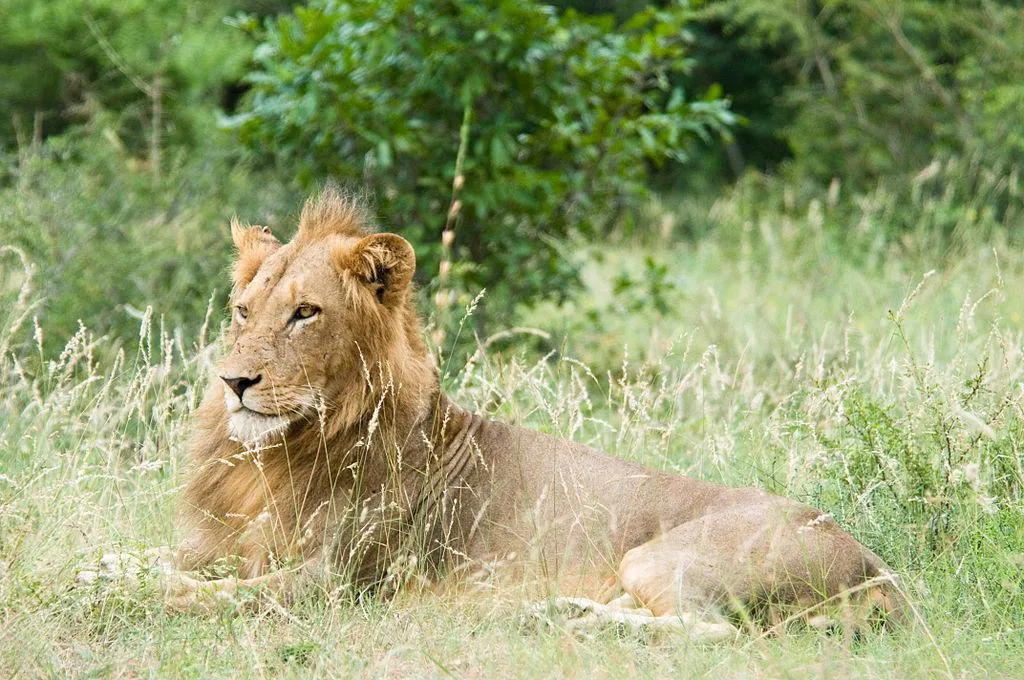Zambia’s Lions Roam Areas Previously Believed to Be Uninhabitable
A select group of migrating big cats ensures high levels of genetic diversity throughout the country’s lion population
/https://tf-cmsv2-smithsonianmag-media.s3.amazonaws.com/filer/93/94/9394f98f-051a-4da0-8c10-fc618f0f59be/panthera_leo_stretching_etosha_2012.jpg)
Approximately 1,200 lions call Zambia—a U-shaped country in southeast Africa known for its abundant wildlife—home. These big cats, constituting one of the continent’s largest lion populations, live in two distinct groups separated by seemingly insurmountable barriers.
But new research suggests a small number of lions do, in fact, move across areas previously believed to be uninhabitable by the species. As researchers led by Caitlin J. Curry, a biologist at Texas A&M University, report in the journal PLoS ONE, these select felines then mate with members of other prides, ensuring high levels of genetic diversity throughout Zambia’s wider lion population.
According to a Conversation article written by Curry, the landlocked country’s lion subpopulations are divided between the Greater Kafue Ecosystem in the west and the Luangwa Valley Ecosystem in the east. Scientists have long believed that geographical and anthropogenic barriers, including different habitats and the presence of a large city lacking wildlife protection, prevent the groups from interacting, but as the new survey found, Zambia’s lions are not as isolated as one might think.
To assess the animals’ genetic diversity, the team extracted DNA from 409 lions, as represented by hair, skin, bone and tissue samples collected between 2004 and 2012.
“The nuclear DNA is inherited by both parents, so you get an idea of diversity in the entire population, whereas the mitochrondial DNA is only inherited through the mother,” Curry says in a press release. “By examining both, you’re getting two different views of inheritance through the populations.”

Writing for Science Trends, Curry explains that previous DNA studies pointed toward the existence of two genetically distinct lion subpopulations in Zambia. The latest analysis confirmed these findings while also identifying similarities between the groups—namely, shared nuclear DNA attributed to male-mediated gene flow, or the movement of genes from one geographic location to another via male animals’ migration.
When mating, male lions cover long distances in search of new prides; females, meanwhile, remain close to their original pride and mate with new males arriving in the area. As a result, Zambia’s lions exhibit gene flow in mitochondrial, rather than nuclear, genes.
Based on the latest findings, the researchers suggest gene flow occurs largely through the southern regions of the eastern subpopulation, with lions traveling between the Lower Zambezi National Park and eastern corridor to the Kafue National Park in western Zambia. “We can’t tell which way they’re moving, but by looking at where lions are more closely related, we can see where genes are being moved,” Curry notes for the Conversation.
According to Curry, higher levels of genetic diversity offer lions a better chance of adapting to their changing environment. She continues, “Both the eastern and western subpopulations have high levels of genetic diversity, but they are still staying genetically distinct enough to remain two sub-populations.”
Moving forward, the team hopes to use this data to support lion conservation and wildlife management across Zambia. Per the Conversation, knowing where lions roam will help scientists ensure the big cats’ safe passage from one part of the country to another, perhaps by creating protected land corridors between various habitats. Doing so could also reduce human-wildlife conflict; as Curry concludes in the statement, “That’s probably why they’re having that conflict in the first place, because they’re not taking into consideration that lions actually are moving across it.”
/https://tf-cmsv2-smithsonianmag-media.s3.amazonaws.com/accounts/headshot/mellon.png)
/https://tf-cmsv2-smithsonianmag-media.s3.amazonaws.com/accounts/headshot/mellon.png)